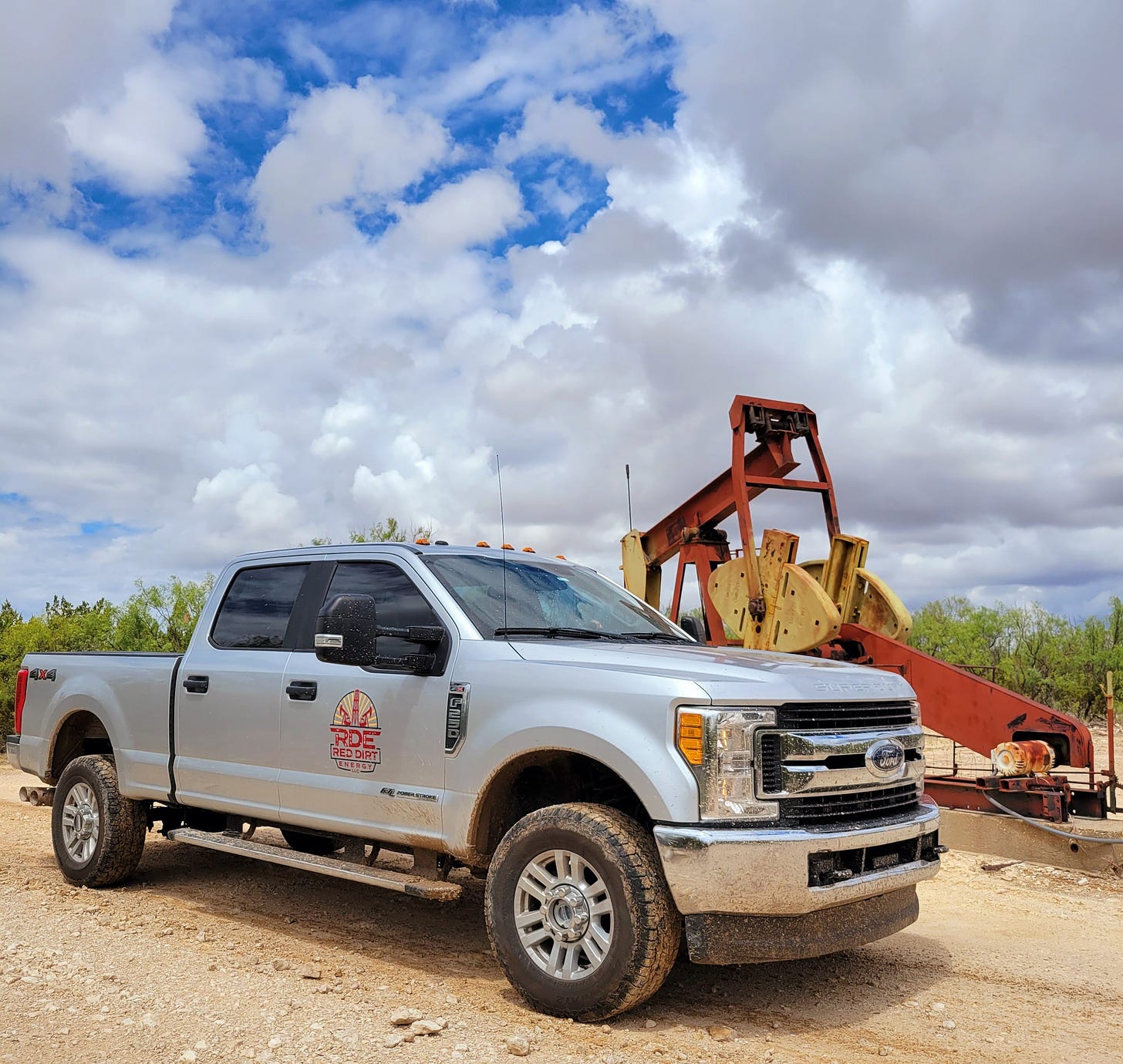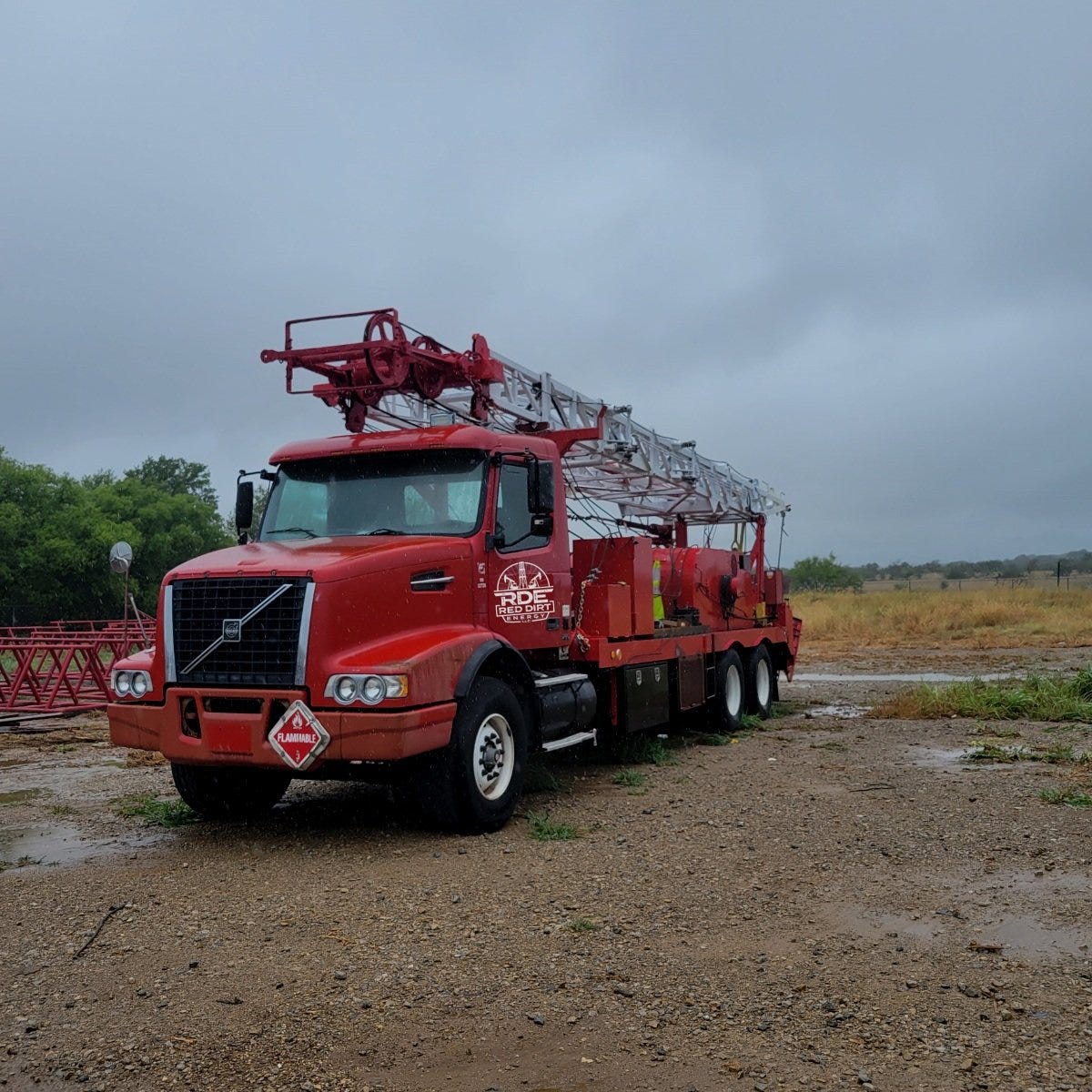In the heart of Oklahoma, Red Dirt Energy, LLC is spearheading a transformative approach to the oil and gas industry. Founded on the principles of superior service, cutting-edge technology, and a commitment to environmental sustainability, this company is making significant strides in revitalizing legacy oil and gas fields.
Scott St. John of Red Dirt Energy joins Jason Spiess and Steve Bakken to talk about abandoned and orphan wells in addition to the energy transition.
“Reagan Smith (parent company) focuses on the federal side of things, drilling permits on BLM, BIA, Forest Service, you name it,” St. John said. “We work all across the country, so as a genesis to Red Dirt Energy, we saw a niche a couple of years ago when the when the Biden administration unleashed a tremendous amount of funds to clean up well sites.”
Red Dirt Energy's mission is clear: to restore land, increase production, and monetize existing assets in a responsible manner. Their operations, headquartered in Oklahoma City, involve not only enhancing the efficiency of oil and gas extraction but also addressing the environmental impacts associated with these activities.
“Reagan Smith and Red Dirt Energy kind of share resources between the two companies, and with our knowledge of wells, how they're drilled,” St. John said. “Together we kinda have an overall soup to nuts in the oil and gas industry from the land side of things to the environmental side of things.”
One notable initiative is their recent addition of oil and gas well plugging services, a crucial step towards long-term sustainability and environmental stewardship.
Collaborations are a cornerstone of Red Dirt Energy's strategy. For instance, the company has partnered with local organizations and indigenous tribes to tackle the issue of orphaned wells, which pose significant environmental hazards. These partnerships highlight the company's dedication to community engagement and sustainable practices.
Another topic was the Bureau of Indian Affairs, Bureau of Land Management and other federal agencies that can make it more difficult for one area, company or person to get a permit versus another.
Securing a permit for oil and gas drilling varies between private lands and tribal federal lands due to differing regulations and governance structures. Here are a few of the reasons and regulations:
Regulatory Framework: Private oil companies on private lands primarily navigate state and federal regulations for permits. On tribal federal lands, the process involves additional oversight by the Bureau of Indian Affairs (BIA) and adherence to tribal laws and agreements.
Ownership and Governance: Tribal lands can be held in trust by the federal government for a tribe or an individual, or owned as restricted-fee land. This means any development on these lands requires coordination with tribal authorities and compliance with specific tribal governance structures.
Permit Application: For private lands, companies file applications directly with state or federal agencies such as the Bureau of Land Management (BLM). On tribal lands, the process also involves the BIA and may require tribal council approval, making it more complex and potentially lengthier.
Rights-of-Way: Obtaining rights-of-way on tribal lands involves specific applications that must be approved by the BIA and the respective tribe, ensuring that the development respects tribal sovereignty and land use policies.
“The process is the same to a large extent, but each office and each BIA office has their own little, you know, projects or their own interests that they want to preserve. So it is different,” St. John said. “It's just something they want to protect or something, so you have to understand first who you're dealing with.”
These distinctions underscore the need for private companies to navigate additional layers of regulation and community involvement when operating on tribal federal lands compared to private lands.
Red Dirt Energy stands out in the industry not just for its technical prowess but for its unwavering commitment to sustainability and environmental protection.
As they continue to innovate and expand their services, the company is poised to set new standards in the oil and gas sector, demonstrating that profitability and environmental responsibility can go hand in hand.
The three talked briefly about the rise of corrupt and fake orphan well companies that popped up over the past several years too.
“We are one of the only company plugging companies that has a website, which is very valuable,” St. John joked. “It's a www.reddirtenergy.net.”
Everyday your story is being told by someone. Who is telling your story? Who are you telling your story to?
Email your sustainable story ideas, professional press releases or podcast guest submissions to thecontentcreationstudios(AT)gmail(DOT)com.

















Red Dirt Energy Making Significant Strides in Revitalizing Legacy Oil and Gas Fields